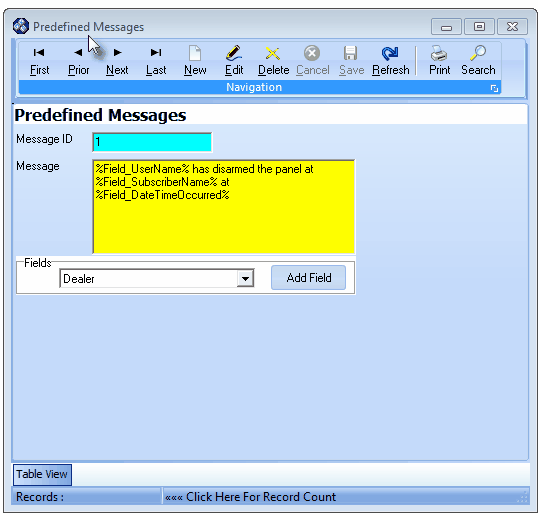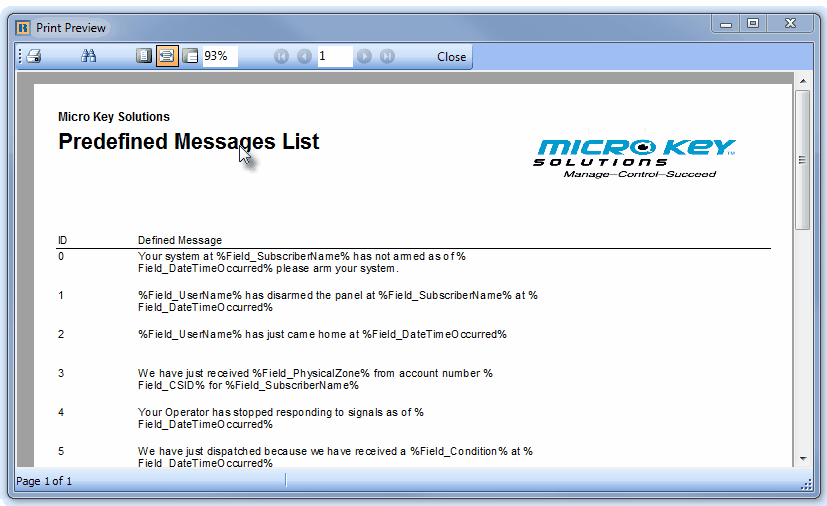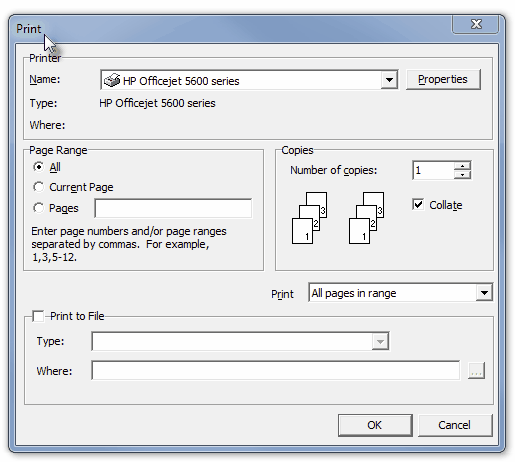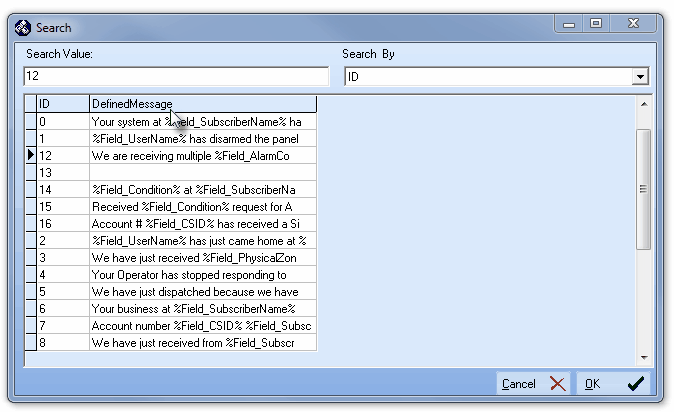| □ | Predefined Messages are used to simplify the creation of: |
| • | Unattended Alarm Notification - If an Operator does not respond to an alarm signal within the established time period, a Predefined Message will be sent to the Communications Module which will then notify (via Pager or Email) the appropriate Standby person(s). |
| • | Enable an Alarm Signal triggered automated message delivery (defined using the Notification List within the CSID Zone and/or Panel Zone Forms) |
| • | These Predefined Messages define the most frequently transmitted types of text, and may include database related content which will be accessed and automatically inserted into the message based on the database field coding embedded in the Predefined Messages. |
| □ | Creating a Predefined Message: |
| • | To create Predefined Messages: |
| • | On the MKMS application's Main Menu Select Maintenance, Choose the Communication Items sub-menu. |
| • | Then Click on the Predefined Messages option. |

Predefined Messages Form
| • | This Predefined Messages Form may be Re-sized by Dragging the Top and/or Bottom up or down, and/or the Right side in or out. |
| • | Navigation Menu - The Navigation Menu is located at the top of the Predefined Messages Form. |

| • | This Navigation Menu provides the normal Record Movement, New, Edit, Delete, Cancel, Save, and Refresh options; as well as special Print and Search functions. |
| • | Record Editing section - The details of the currently selected record are displayed below the Navigation Menu at the center (Main Body) of the Predefined Messages Form. |
| • | Table View tab - A tabular (spreadsheet style) Table View of the currently defined Predefined Messages is accessible by Clicking the Table View tab at the bottom of the Predefined Messages Form. |

| • | To display a specific Predefined Message record in the Record Editing section, Click on that record within the Table View section, or use the Search Icon (see the "Using the Special Functions" section later in this chapter). |
| • | This Table View information may be Pinned in Place by Clicking the Pin Icon on the right. |

Predefined Messages Form - with Table View tab Pinned Open
| ▪ | You may Un-Pin this Table View by Clicking the Pin Icon again. |
| ▪ | Click on any listed record to display that information in the center (Main Body) of the Form. |
| • | There are two columns of data in this Predefined Messages Record Listing: |
| 1) | Predefined Message ID - The record number which identifies this Predefined Message entry. |
| 2) | Defined Message - The text (the message using any words or numbers and adding Macro Substitution Entries) of this Predefined Message entry. |
| • | Each column's Header Name describes the data contained in that column. |
| ▪ | Clicking on a Header Name will set the order in which the Predefined Messages will be listed. |
| ▪ | Clicking on the same Header Name will set the order in the opposite direction (ascending vs. descending). |

| ▪ | The Header Name that is determining the Order of the list will have an Icon indicating the Order displayed next to that Header Name. |
| • | To define the various (additional) Predefined Messages types: |
| • | Click the  Icon to start the Predefined Messages entry in the Record Editing section. Icon to start the Predefined Messages entry in the Record Editing section. |
| • | Message ID - This is the system assigned record number which is inserted automatically when the Predefined Message record is initially saved. |
| • | Message - Enter a Description of this Panel Connection entry. |
| ▪ | The Defined Message may be almost any length (up to 254 characters) and include upper and/or lower case letters, numbers, spaces, normally used punctuation marks, and Macro Substitutions. |
| ▪ | The Macro Substitution Entries are specially formatted words and characters that instruct MKMS to insert the data, that is actually in that field within the database, in place of those Macro Substitution characters. |
| ▪ | Macro Substitution Entries must start with %Field_, then have the actual name of the field containing the data that is to be inserted in the Predefined Message, and must end with the % sign resulting in a format as follows: %Field_FieldName% |
| • | Fields - Use the Drop-Down Selection List to Choose a Field Name to insert the actual data these represent into the message. |

Some of the available Field Names
| ▪ | Add Field - Position the cursor within the Message field where the Field Name is to be inserted, then Click the Add Field button. |
| o | The added field name will appear within the Message field using the following format: %Field_FieldName% |
| • | Click the  Icon to record this Predefined Message entry. Icon to record this Predefined Message entry. |
| • | Repeat this process, as needed, to define each Predefined Message in use. |
| □ | Off Test Warning - A Predefined Message is also used to setup an automatic Email Warning Message normally sent to a Technician to alert him/her that an Account (s)he put On Test will be coming Off Test shortly. |
| • | This Email Warning Message will be generated just before an On Test Account is going Off Test by using the Communication Module. |
| □ | Using the Special Functions on the Navigation Menu at the top of the Predefined Messages Form: |
| • | Print - Click the Print Icon to View and/or Print a list of the Predefined Messages. |

| • | Yes - Click the Yes button to View a copy of the report. |

| • | No - Click the No button to open the Windows® Print dialog where a copy of the report may be sent to a selected Printer, or Printed to a File. |

| • | Cancel - Click the Cancel button to close this Print question and return to the Form. |
| • | Search - Click the Search Icon to open the Search (Predefined Messages) dialog. |

Search dialog
| • | See the "Using the Generic Search dialog" section in the Advanced Search Dialog chapter for more information about this Search dialog. |










![]()

![]()




